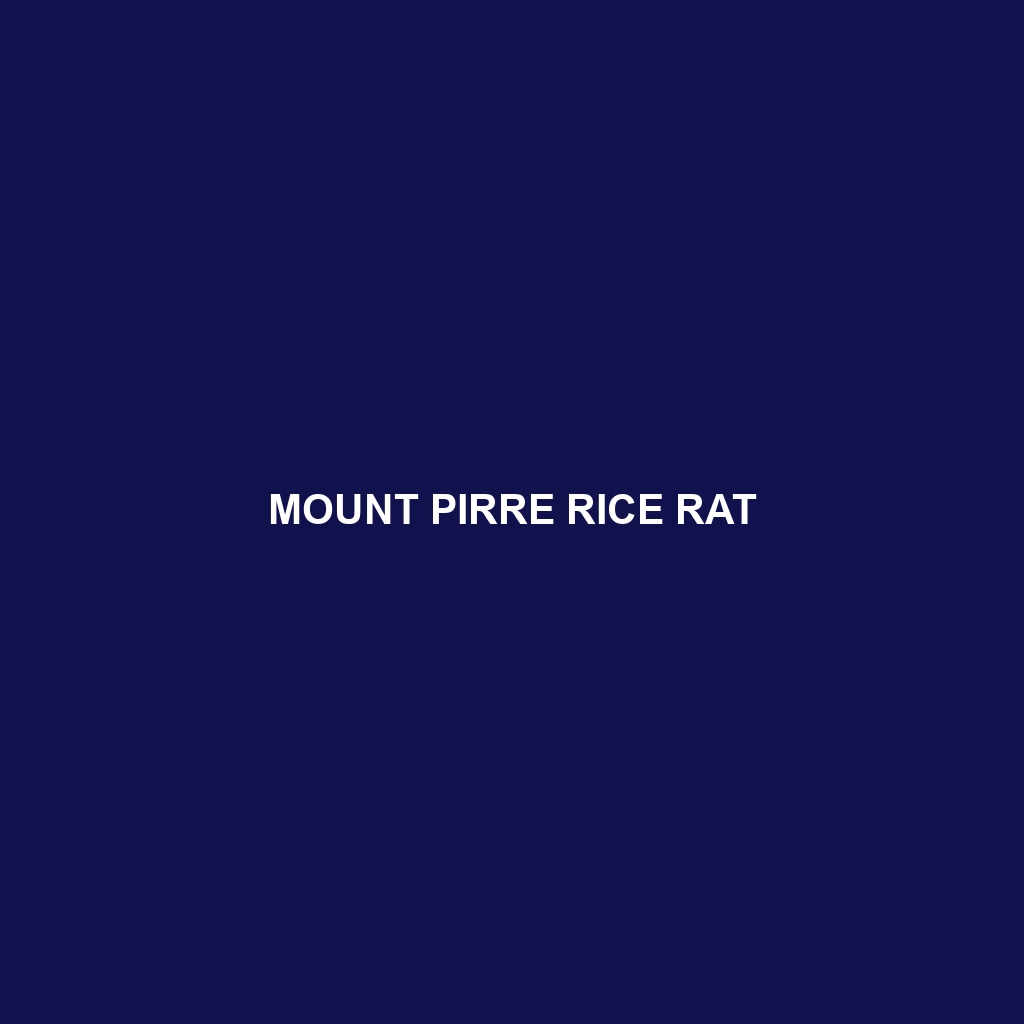Common Name: Mount Pirre Rice Rat
Scientific Name: Oryzomys pirrensis
Habitat:
The Mount Pirre Rice Rat is primarily found in the humid montane forests of the Panama region, specifically endemic to the high-elevation areas surrounding Mount Pirre in the Chiriquí Province. These wooded regions feature dense underbrush, bamboo thickets, and a rich biodiversity that provides an ideal environment for this species.
Physical Characteristics:
This rodent measures approximately 25 to 30 centimeters in body length, excluding the tail, which can add another 20 centimeters. The Mount Pirre Rice Rat exhibits a robust body covered in coarse fur, primarily grayish-brown with lighter underparts. Its distinctive features include large, rounded ears, long whiskers, and a bushy tail that is often darker on top. These physical traits not only help it adapt to its forest habitat but also make it a fascinating subject for studies of rodent anatomy.
Behavior:
Mount Pirre Rice Rats are predominantly nocturnal, exhibiting crepuscular activity patterns. They are known for their agile climbing abilities, allowing them to forage in trees and shrubs. Socially, these rodents are somewhat solitary but may exhibit social interactions during the breeding season. Their adaptation to both terrestrial and arboreal environments makes them opportunistic foragers, which enhances their survival in the wild.
Diet:
The diet of the Mount Pirre Rice Rat primarily consists of seeds, fruits, and various plant materials, which they gather from both the forest floor and trees. They are also known to consume insects and other small invertebrates, making them omnivorous foragers. This diverse diet not only sustains their energy needs but also plays a pivotal role in seed dispersion within their habitat.
Reproduction:
Mount Pirre Rice Rats typically breed in the warmer months, with a peak breeding season occurring between April and July. Females give birth to litters ranging from two to six offspring after a gestation period of approximately 25 days. Notably, the young are weaned within three weeks and begin foraging independently shortly thereafter, illustrating the species’ rapid growth and adaptability.
Conservation Status:
The Mount Pirre Rice Rat is currently classified as endangered due to habitat loss driven by deforestation and human encroachment in its natural environment. Conservation efforts are critical to preserving this unique species, as its population continues to face threats from environmental changes.
Interesting Facts:
Despite being less commonly known, the Mount Pirre Rice Rat is a unique species with limited distribution, making it of great interest to researchers studying biodiversity in montane ecosystems. Additionally, they play a significant role in their environment, highlighting their importance in maintaining healthy forest dynamics.
Role in Ecosystem:
As a seed disperser and a food source for larger predators, the Mount Pirre Rice Rat plays an integral role in its ecosystem. By aiding in the propagation of various plant species, it helps maintain the health and stability of the montane forests it inhabits. Additionally, its interactions with other species contribute to the complex food web present in these biodiverse habitats.
